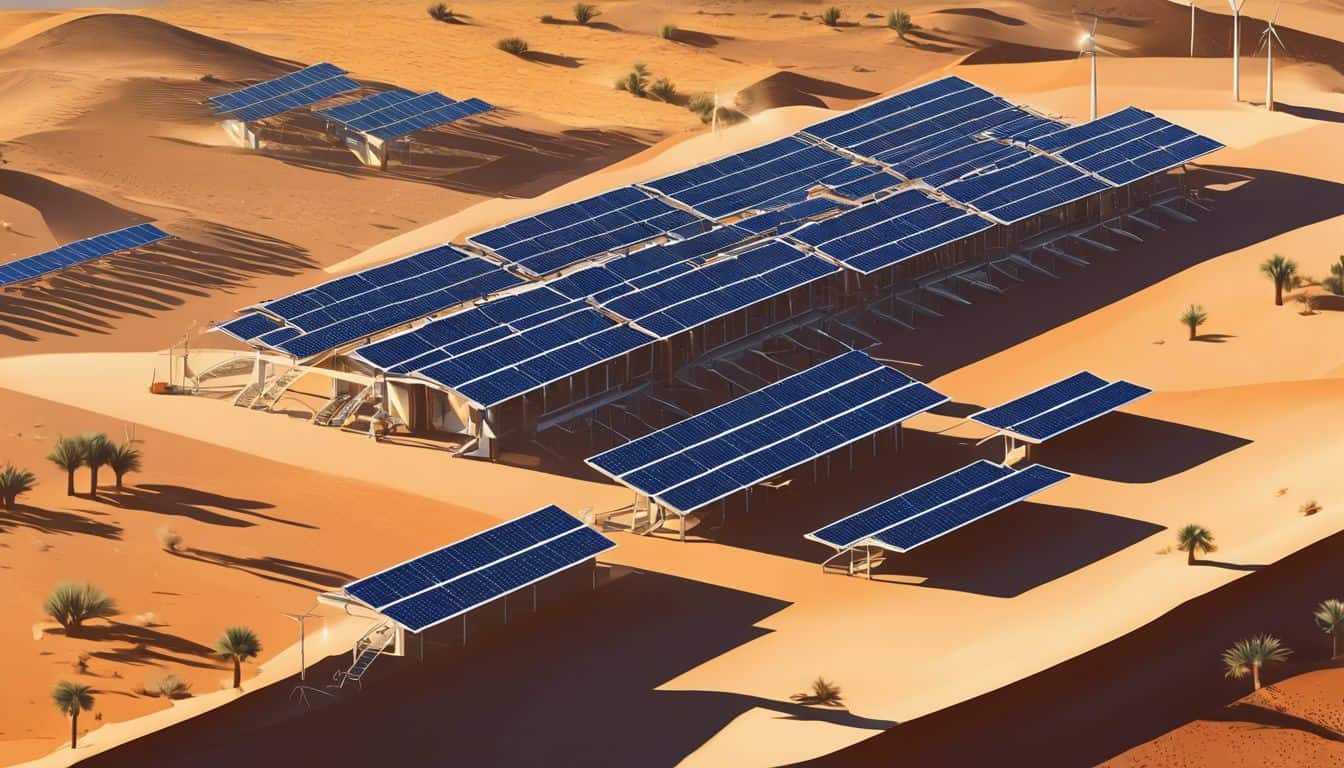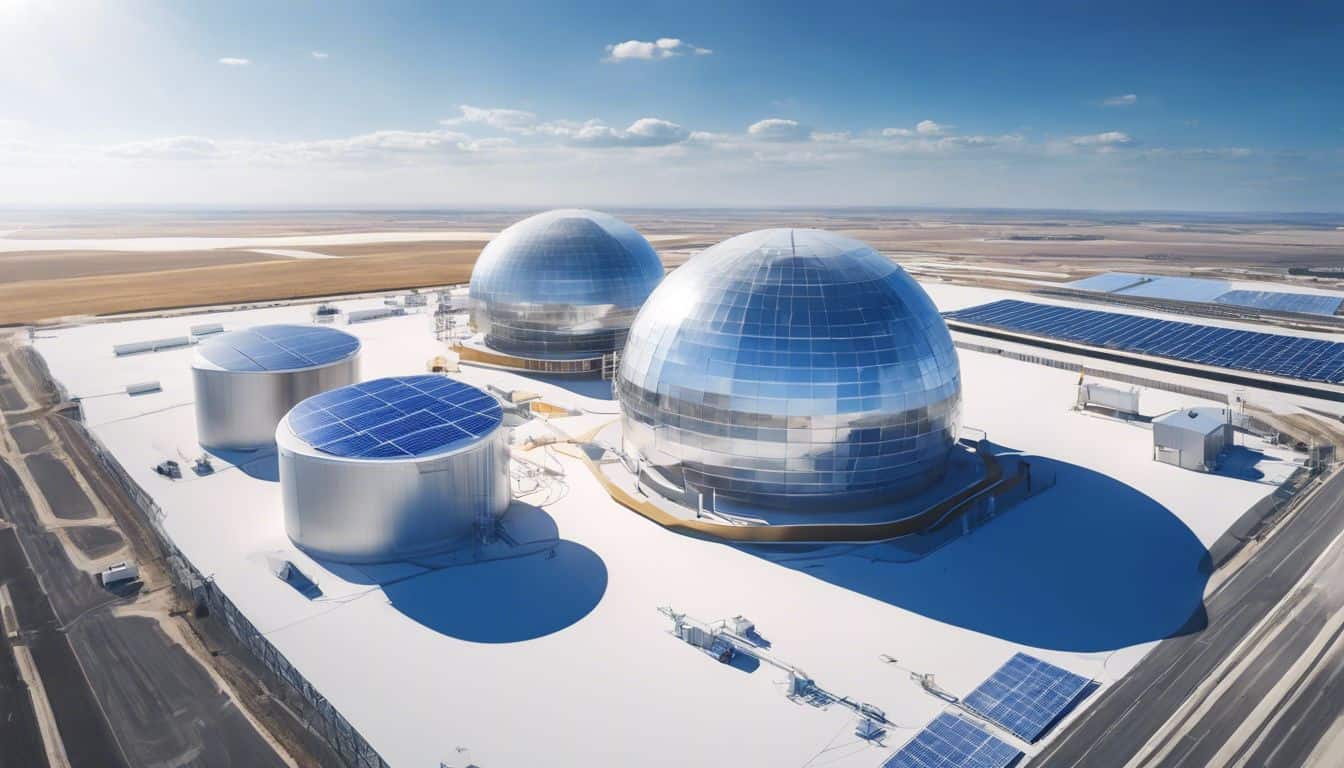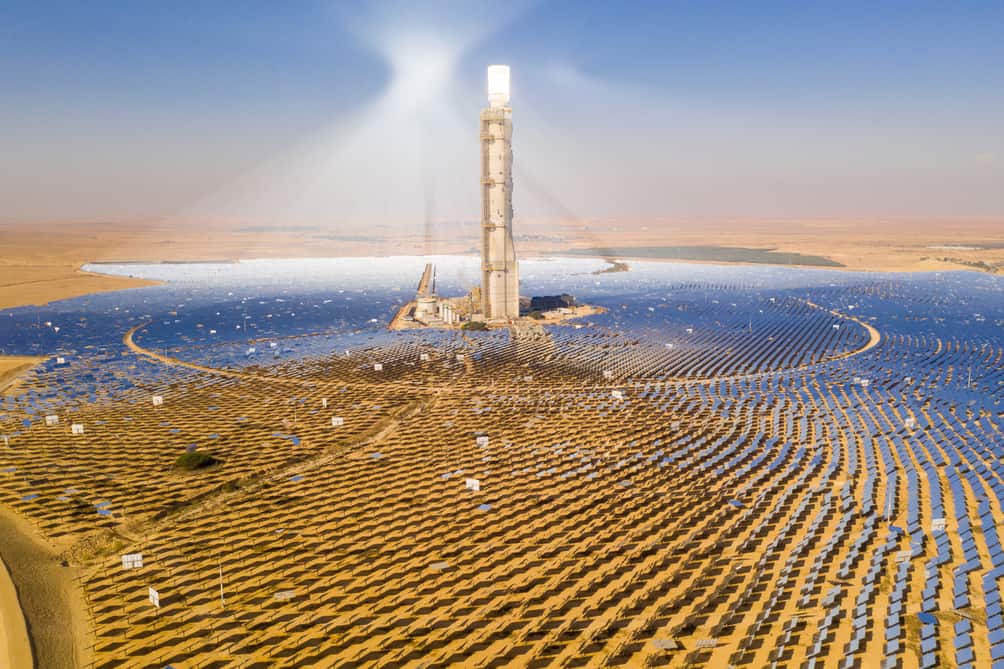Concentrated Solar Power (CSP) technology has made significant strides in recent years, positioning itself as a key player in the renewable energy landscape. As the world seeks sustainable solutions to combat climate change, innovations in CSP are paving the way for more efficient, cost-effective, and versatile solar energy systems.
This article explores the cutting-edge advancements shaping CSP’s future and its potential to revolutionize the renewable energy sector.
Advanced Solar Concentrators
The heart of any CSP system lies in its ability to concentrate sunlight effectively. Recent innovations have led to significant improvements in solar concentrator designs:
- Improved parabolic trough systems: Engineers have developed more efficient parabolic troughs with enhanced reflective surfaces and structural designs that reduce material costs while improving solar concentration.
- Next-generation heliostat designs: New heliostat technologies feature advanced tracking systems and lightweight materials, increasing efficiency and reducing installation costs.
- Linear Fresnel reflector advancements: Innovations in Linear Fresnel technology have led to more compact designs and improved optical efficiency, making them increasingly competitive with other CSP technologies.
These advancements are contributing to the global trends in concentrated solar power adoption, as more countries recognize the potential of CSP in their energy mix.

High-Efficiency Receivers
Receivers play a crucial role in converting concentrated sunlight into usable heat. Recent innovations include:
- Novel materials for improved heat absorption: Researchers have developed new materials with enhanced thermal properties, allowing higher operating temperatures and improved efficiency.
- Advanced coatings: Cutting-edge coatings are being applied to receivers to reduce heat loss and increase overall system efficiency.
- Volumetric air receivers: These innovative receivers use porous materials to absorb solar radiation more effectively, leading to higher temperatures and improved thermal efficiency.
- Particle receivers: A promising new technology, particle receivers use small ceramic particles to absorb and transfer heat, potentially allowing for much higher operating temperatures than traditional molten salt systems.
Thermal Energy Storage Breakthroughs
One of CSP’s key advantages is its ability to store thermal energy for use when the sun isn’t shining. Innovations in this area include:
- Molten salt innovations: Researchers are developing new salt mixtures that can operate at higher temperatures, increasing energy storage capacity and system efficiency.
- Phase change materials (PCMs): These materials can store and release large amounts of energy during phase transitions, offering the potential for more compact and efficient storage systems.
- Thermochemical storage systems: This emerging technology uses reversible chemical reactions to store and release heat, potentially offering higher energy density than traditional storage methods.
These advancements in thermal storage are critical for making CSP a reliable baseload power source capable of providing electricity 24/7.
Power Block Enhancements
Innovations in the power generation side of CSP plants are also driving efficiency improvements:
- Supercritical CO2 power cycles: These advanced power cycles promise higher efficiencies and more compact power blocks than traditional steam turbines.
- Advanced steam turbine designs: New turbine designs are pushing the boundaries of efficiency in CSP plants.
- Integration with combined cycle systems: Hybrid systems combining CSP with natural gas or other power sources increase overall plant efficiency and reliability.
For a more detailed look at these and other innovations, check out this guide to concentrated solar power innovations.
Smart Control Systems and Optimization
The integration of advanced control systems and artificial intelligence is revolutionizing CSP plant operations:
- AI and machine learning: These technologies are used to optimize plant operations in real time, improving efficiency and reducing costs.
- Predictive maintenance: Advanced monitoring systems can predict equipment failures before they occur, reducing downtime and maintenance costs.
- Automated heliostat field control: Smart control systems are improving the accuracy and efficiency of heliostat tracking, maximizing energy capture throughout the day.
Hybrid Systems and Integration
CSP is increasingly being combined with other technologies to create more versatile and efficient energy systems:
- CSP-PV hybrid plants: These systems combine both technologies’ strengths, providing more consistent power output and improved overall efficiency.
- Integration with industrial processes: CSP is used to provide high-temperature heat for industrial applications, expanding its potential beyond electricity generation.

Conclusion
The rapid pace of innovation in concentrated solar power is driving the technology towards higher efficiency, lower costs, and broader applications. From advanced materials and smart control systems to novel storage solutions and hybrid configurations, CSP is evolving to meet the world’s growing demand for clean, reliable energy.
As these innovations mature, we can expect CSP to play an increasingly important role in the global energy landscape. The technology’s ability to provide dispatchable renewable energy is a valuable complement to other intermittent renewable sources like wind and photovoltaic solar.
For those interested in seeing these innovations in action, there are numerous concentrated solar power projects around the world that showcase the latest advancements in CSP technology.
The future of concentrated solar power is bright. With continued research, investment, and policy support, it has the potential to be a game-changer in our transition to a sustainable energy future.
FAQ
How are governments de-risking CSP investments?
Targeted incentives now focus on revenue stacking. Morocco’s Noor Midelt project combines:
- €0.11/kWh electricity Power Purchase Agreement
- $18M/year from industrial heat sales
- Carbon credit monetization
Spain’s new “CSP Acceleration Plan” offers 40% tax rebates for plants with ≥10hr thermal storage.
What breakthrough makes CSP viable for mineral-rich nations?
Direct ore processing with solar heat cuts energy costs 63%. Chile’s Cerro Dominador CSP facility provides 24/7 heat to copper smelters at $22/MWh – 41% cheaper than LNG. This model drives 14 new projects across Chile’s Atacama mining region.
Which hybrid models boost project ROI?
Three proven configurations:
- CSP-PV-wind tri-hybrids (South Africa’s Redstone Plant: 56% capacity factor)
- Desalination co-location (Saudi’s Neom: 240,000 m³/day freshwater + 2.6GW power)
- Data center integration (Google’s Nevada pilot cuts cooling costs 38%)
How are modular designs changing CSP economics?
Prefabricated 50MW tower units deploy in <8 months vs. 3 years for traditional plants. China’s Supcon Delingha uses this approach, achieving $0.063/kWh – beating coal in 3 provinces. Modularization cuts construction waste by 62%.
What makes MENA the new CSP epicenter?
Four strategic advantages:
- Dual revenue streams: Electricity + green hydrogen (UAE’s DEWA targets $1.5/kg H₂)
- High DNI + land availability: Saudi sites average 2,800 kWh/m²/year
- Export positioning: Morocco’s Xlinks plans UK exports via 3,800km HVDC cable
- Local manufacturing: Dubai’s CSP exports grew 217% since 2022
Which storage innovations maximize profitability?
Phase-change materials (PCMs) dominate new projects:
- Cost: $14/kWh (vs. $27/kWh lithium batteries)
- Efficiency: 93% round-trip vs. 89% molten salt
- Example: Australia’s Vast Solar 1 uses an aluminum-based PCM for 18hr storage at $0.019/kWh
How does CSP enable green hydrogen competitiveness?
High-temperature electrolysis cuts energy needs 32%. Dubai’s Noor Energy 1 achieves:
- 56% solar-to-hydrogen efficiency
- $2.11/kg production cost
- 24/7 operation via 15hr thermal storage
Competitive with Liquefied Natural Gas when carbon prices exceed $60/ton.
What workforce strategies address CSP skill gaps?
Three emerging solutions:
- Digital twin training: Saudi’s CSP Academy cut training time 40%
- Robotic O&M: Spain uses drones for 83% of heliostat inspections
- Skill partnerships: Germany trains 500 South African engineers annually
Which policy tools accelerate CSP deployment fastest?
Top 3 effective mechanisms:
- Baseload renewable mandates (California: 1GW CSP by 2032)
- Storage-specific incentives (India: ₹18.5M/MWh subsidy)
- Hybrid tax credits (US ITC: 35% for CSP-PV plants)
How do CSP costs compare to other dispatchable sources?
| Technology | LCOE (2025) | Storage Duration | Carbon Intensity |
|---|---|---|---|
| CSP with PCM | $0.072/kWh | 10-18 hours | 0 gCO₂/kWh |
| Gas Peaker | $0.151/kWh | 2-4 hours | 450 gCO₂/kWh |
| Nuclear | $0.135/kWh | 24/7 | 12 gCO₂/kWh |
| Battery + PV | $0.098/kWh | 4-6 hours | 25 gCO₂/kWh |
Source: NREL 2025 Annual Technology Baseline

Leave a Reply